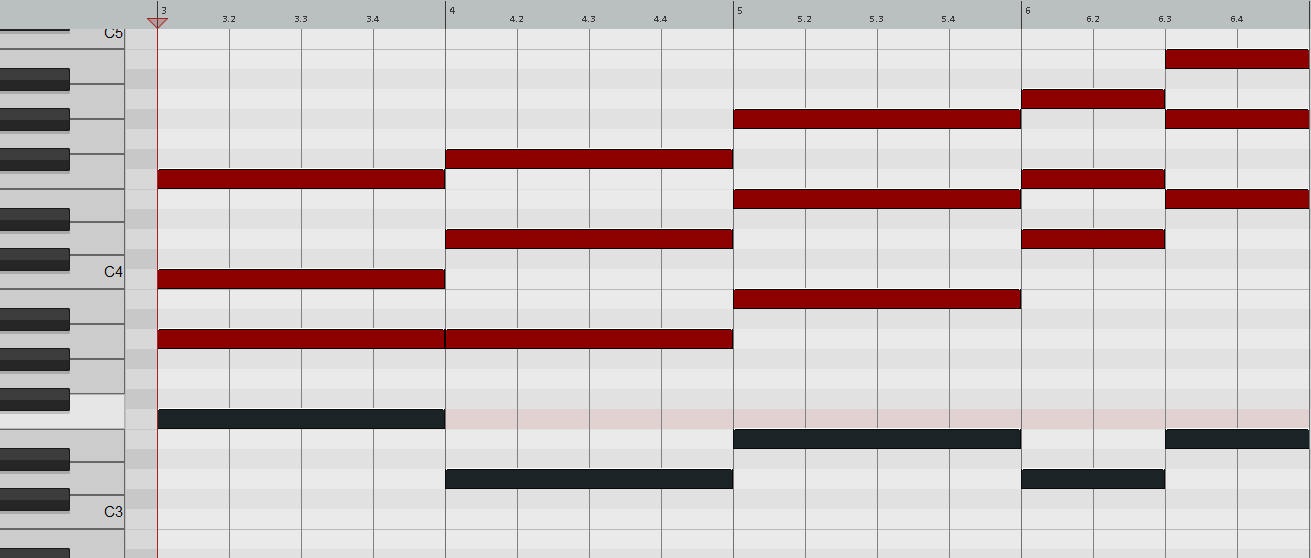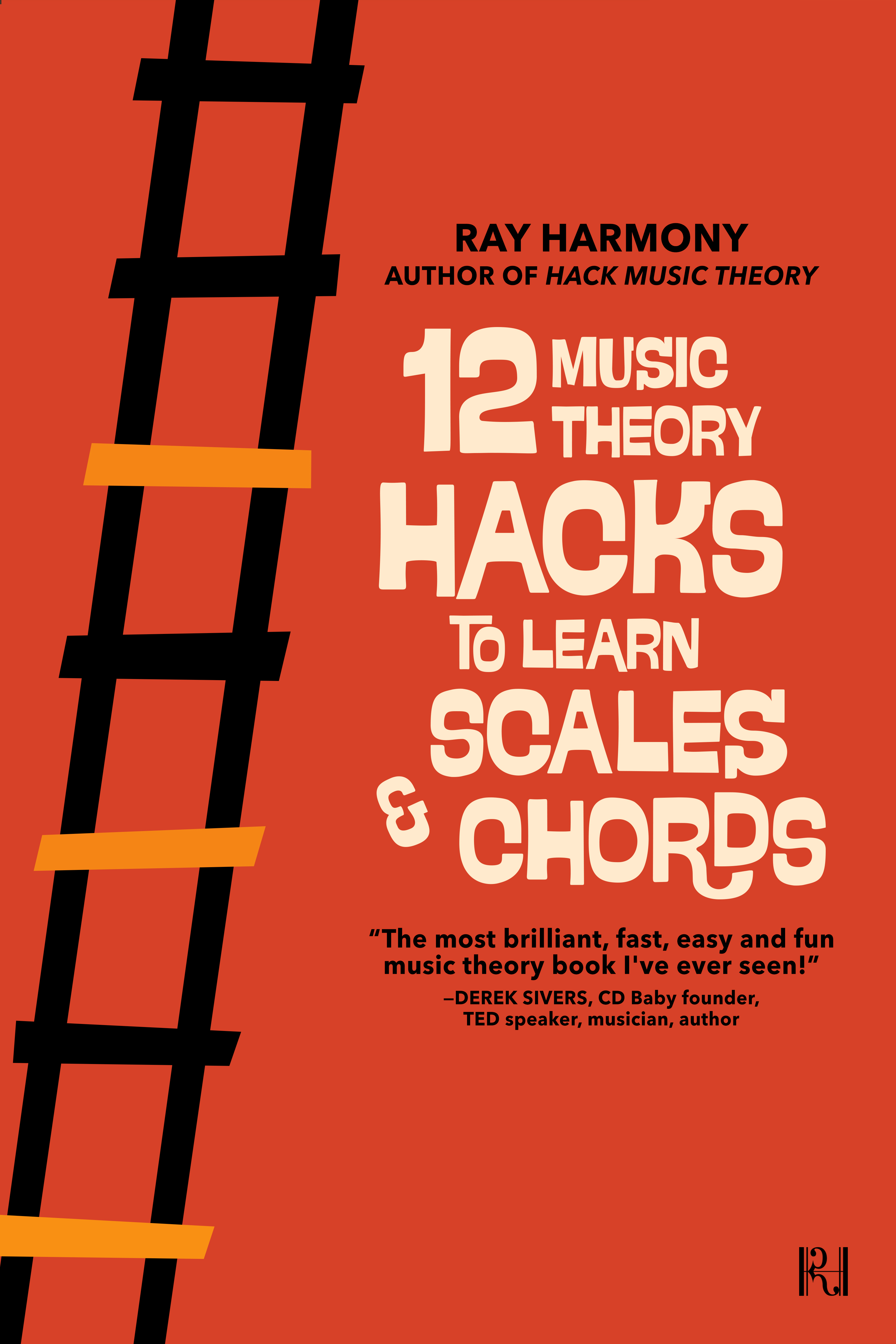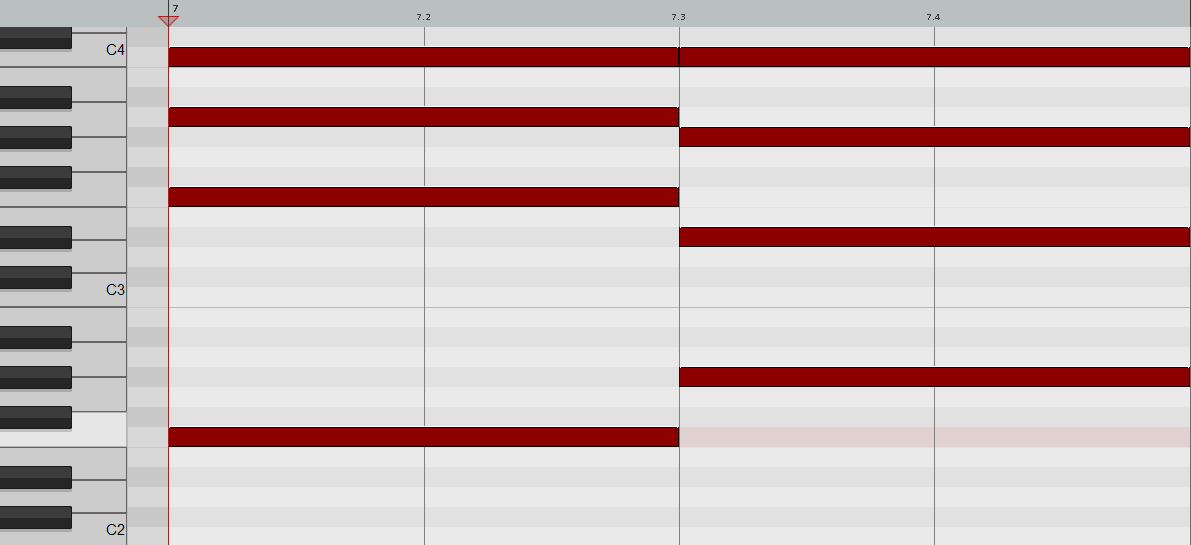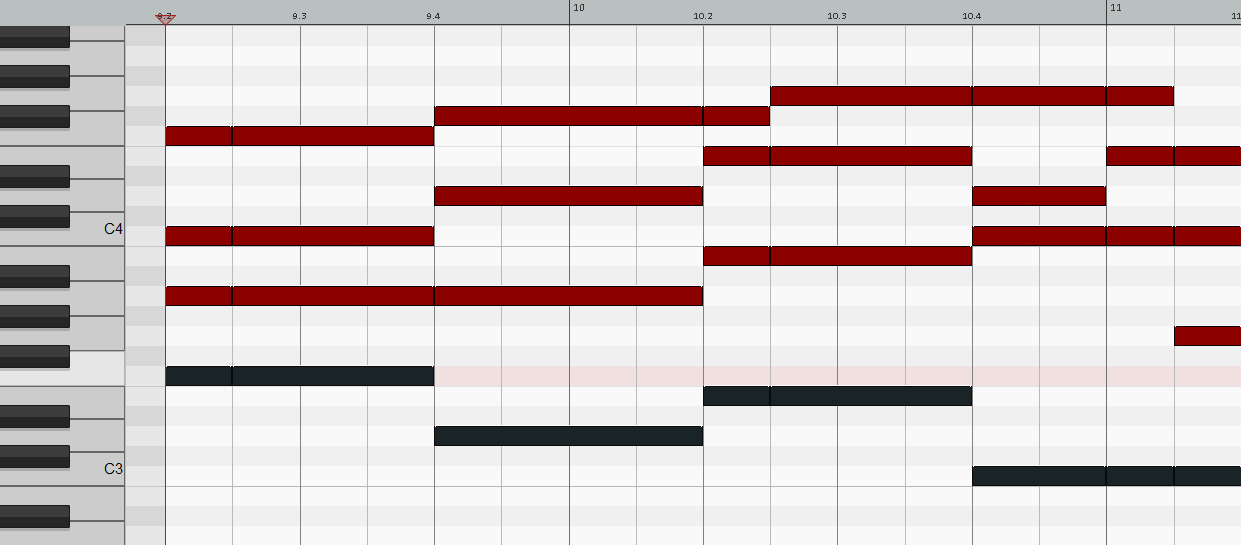what scales modes to play over non-diatonic chords
How to Write a Chord Progression Using Chords Not in the Key
How to Write a Chord Progression Using Chords Not in the Primal
Knut from the electronic music hub of Tromsø in Kingdom of norway, emailed us with this question: "I've spent some time analyzing an sometime track from The Prodigy called 'Out of Space'. The first role of this rails mainly consists of a chord progression and a synth riff. I've adamant the chords used to be Fmaj/A → Dmaj/A → Emaj/B → Dm → Emaj. I think that the song is written in F major (Ionian). Now onto my question: The Dmaj and Emaj chords are outside of the scale, while the residue of the chords conform to it. I'g wondering if you have any tips for how you would approach breaking the 'rules' in this manner?" Cheers Knut, this is an advanced and crawly question, and you've already fabricated some wise observations, then nosotros're excited to connect these dots for you, starting with our one-sentence reply:
Your chord progression can safely venture out of its calibration past adding a non-diatonic chord, which is a chord that contains ane or more than notes from outside that calibration, every bit long as that non-diatonic chord all the same contains at least 1 note from that scale.
First, let's merely solidify the terms "diatonic" and "non-diatonic". But put, diatonic refers to notes that are in the scale, and not-diatonic refers to notes that are not in the scale. Then, all the notes of a diatonic chord are in the calibration, merely i or more notes of a non-diatonic chord are out of the scale. By the way, non-diatonic notes are also referred to as chromatic notes, because the chromatic scale contains all 12 notes.
Okay let's get to the chord progression in your question now. We oasis't had time to listen to the song and double check your analysis, so we'll just piece of work with the information y'all've given us. Besides, using the verbal chords in this example isn't important, every bit the lesson here is nigh non-diatonic chords, which y'all tin and then utilise to any chord progression. So, you said the chord progression is in the key of F major (AKA Ionian), which means the diatonic chords we can use are as follows: Fmaj, Gm, Am, B♭maj, Cmaj, Dm, Edim. Now, here'southward the chord progression you gave us. We've but added the root note of each chord below as reference (these root notes are muted, and nighttime in the midi screenshot beneath), but these are not role of the chords.

Figure one: Chord progression in F major (Ionian) from Knut'south question
In this chord progression, Fmaj is the I, AKA the root triad, so that's a diatonic chord. Dmaj is the VI, simply it'southward major instead of pocket-size, then that's a non-diatonic chord. Information technology creates tension as the 3rd note in Dmaj is F♯, a non-diatonic note that clashes with our retentiveness of F from the first chord, which is as well the root annotation of the cardinal. Emaj is the Seven, but it's major instead of macerated, so that's besides a non-diatonic chord. Whereas Dmaj only contained 1 non-diatonic annotation, Emaj contains two: G♯ instead of G, and B instead of B♭. So all in all, this chord progression makes use of 3 non-diatonic notes, which definitely blurs the lines of a secure dwelling house. It makes the chord progression sound a fleck wild, which is thrilling when it's done well.
Past the way, if yous need aid with scales and chords (or if y'all just need a refresher), thendownload our free volume below. It only takes thirty minutes to read, and and so y'all'll accept a super solid music theory foundation!
 |
Wooohooo!!! Yous're a mere 30 minutes abroad from beingness even smarter than you lot already are. Simply head on over to your inbox now for your free download.
And then, is this example done well? The brusk answer is: yes, and no. The all-time way to add together non-diatonic chords to a chord progression is by using a common note from the diatonic chord into the non-diatonic chord, which smoothes an otherwise precipitous modify. That'south what happens in the Fmaj → Dmaj, where the common note is A. Recollect to always re-arrange the notes so your common annotation is in the same identify within both chords, which is exactly what happened here to go the Fmaj/A → Dmaj/A, where A is the bass note in both chords. Unfortunately though, this is the just chord change in this progression that really flows well, and you lot tin hear how the rest of it doesn't sound virtually as shine equally the first two chords. Remember, when you don't have a common annotation, y'all can brand one using a sus chord. For more on this, please watch our Chords video from song one.
To conclude, nosotros'll simplify this into two different types of not-diatonic chords. The first type is built from a root note that'southward in the scale, but one or more than of the other notes in the chord are not in the scale. These not-diatonic chords tend to be sneakier to uncover, as at showtime glance they look like they're in the key. An example of this type would be the Dmaj in this chord progression, as its root annotation D is in the scale, simply its 3rd notation, F♯, is non.
The second type is congenital from a non-diatonic root note, and these chords are more obvious to run across and hear, equally they immediately stick out from the scale. In F Ionian, a non-diatonic chord of this type would be A♭maj, which is instantly recognisable as a non-diatonic chord considering its root note A♭ should exist an A. Even with an obvious non-diatonic chord similar this, nosotros tin withal brand it fit smoothly into a chord progression using a mutual notation, like C betwixt Fmaj and A♭maj.

Effigy two: Chord change from Fmaj to A♭maj/E♭ with a common notation (C) to smooth the transition into a not-diatonic chord
Finally, here'south a little chord progression nosotros made, inspired past this example, merely where each chord shares a common annotation with the next chord. The chords are: Fmaj/A → Dmaj/A → Esus2/B resolving to Em/B → Csus2 resolving to Cmaj and so Cmaj/Grand. The root notes are muted beneath each chord for reference. This chord progression is definitely in the key of F major, even though half the chords are not-diatonic, i.eastward. the Dmaj, Esus2 and Em. As always, we added a little synth, bass and drums for fun. You tin listen at 8:01 in the video/podcast. Hope you savor!

Figure iii: Our chord progression in F major (Ionian), with the chords Fmaj/A → Dmaj/A → Esus2/B resolving to Em/B → Csus2 resolving to Cmaj and then Cmaj/Grand
And so that'due south our answer! Thanks for reading, and if y'all'd similar more advanced hacks like this, then please read our Songwriting & Producing PDF (click & scroll down). It contains all of Ray Harmony's best peak-secret songwriting and producing hacks, and includes MIDI file examples. These xiv hacks brand everything simple, even the oft-misunderstood modes. Other hacks include: how to write chord progressions, how to write bass lines, how to write synth/guitar riffs, how to write lead melodies, how to write counterpoint harmonies, how to modulate (i.e. change key), and even how to write lyrics!
Kate Harmony
Music Teacher
Victoria BC, Canada
barcenasjunashe1945.blogspot.com
Source: https://hackmusictheory.com/blogs/theory/posts/how-to-write-a-chord-progression-using-chords-not-in-the-key
0 Response to "what scales modes to play over non-diatonic chords"
Post a Comment